In recent years, home weather stations have become increasingly popular. These devices allow you to monitor and track the weather conditions in your area, giving you valuable information on temperature, humidity, wind speed, and precipitation.
With so many options available on the market, it can be difficult to determine which home weather station is the best fit for your needs. Some models offer advanced features like mobile app integration and real-time alerts, while others prioritise accuracy and reliability over extra functionality.
In this article, we've rounded up some of the best home weather stations currently available, whether you're a casual weather watcher or a serious hobbyist.
What to look for when buying a home weather station
Functionality
Once the weather station is set up, it typically provides real-time weather data, such as temperature, humidity, barometric pressure, wind speed and direction, and precipitation. But for some brands, these come as optional add-ons, so it’s worth figuring out whether you want a decent all-rounder, or would prefer to prioritise certain aspects.
Most weather stations these days also offer additional features, such as forecasting, historical data (to see trends), and connectivity to an app or website - so it's worth seeing if your phone is compatible with the latest version of the app before you buy.
Ease of use
Home weather stations can vary in terms of their complexity and ease of use, but in general, they are designed to be user-friendly and easy to set up. The setup process usually involves mounting the sensors, connecting the display console, and configuring the settings.
Remote access
How do you want to review the data you’ve collected? Most devices on the market at the moment are Wi-Fi enabled, and you can save a bob or two by opting for app-enabled devices rather than having a dedicated display.
If your device is positioned a long way from your home Wi-Fi, or thick walls interfere with the signal, you might want to consider getting a Wi-Fi extender.
Display
The display console of a home weather station is designed to be intuitive and easy to navigate, with clear and easy-to-read displays that show the current weather conditions and trends. Some weather stations even offer voice-activated controls, Alexa compatibility, and touchscreen interfaces for added convenience.
If you opt for a dedicated display (as opposed to an app), then LCDs are likely to be the most common type you’ll come across and are generally more power-efficient than LED displays. And, like with other cool gadgets, LCDs are available in both full colour and black and white.
Most companies are leaning towards touchscreen displays in 2023, but there are still a few out there that offer good old-fashioned tactile buttons, if you prefer.
Accuracy
It goes without saying we want our devices to be accurate, so it’s worth reading the reviews before splashing the cash. It’s worth remembering also, that aside from manufacturing, there are external factors that can affect the accuracy of your device. More on that below.
Durability
Generally speaking, a good quality home weather station should be made of materials that are resistant to corrosion, rust, and UV rays. The sensor array and other outdoor components should be made of sturdy materials (like stainless steel or aluminium), that can withstand exposure to the elements.
In addition to being weather-resistant to the notoriously unpredictable British weather, a home weather station should also be designed to be easy to install and maintain; sensors and other components should be easy to access and replace if needed.
Where should I position my home weather station?
The positioning of your home weather station can have a significant impact on its accuracy, so it’s worth scouting out a good location if you want the most accurate readings. Here are a few things to consider:
Obstructions
Position the weather station away from any obstructions that could interfere with the flow of air or the collection of precipitation. Trees, buildings, and other structures can cause turbulence in the air, leading to inaccurate readings.
Exposure
Consider the exposure of the weather station to the sun, wind, and rain. Direct sunlight can cause the temperature readings to be higher than the actual temperature, and places more likely to get the ‘wind tunnel’ effect, can influence the accuracy of the wind speed and direction readings.
Likewise, if the station is too exposed to rain, it may collect more precipitation than the surrounding area, and you'll get a false reading.
Distance from sources of heat
Avoid placing your weather station near sources of heat such as air conditioning units, outdoor ovens, or buildings with a lot of windows as this can cause inaccurate temperature readings.
Distance from paved surfaces
Place the weather station away from paved surfaces, such as drives or car parks, as they can radiate heat and affect temperature readings.
Best home weather stations to buy in 2023
Ecowitt HP2564 WittBoy Pro
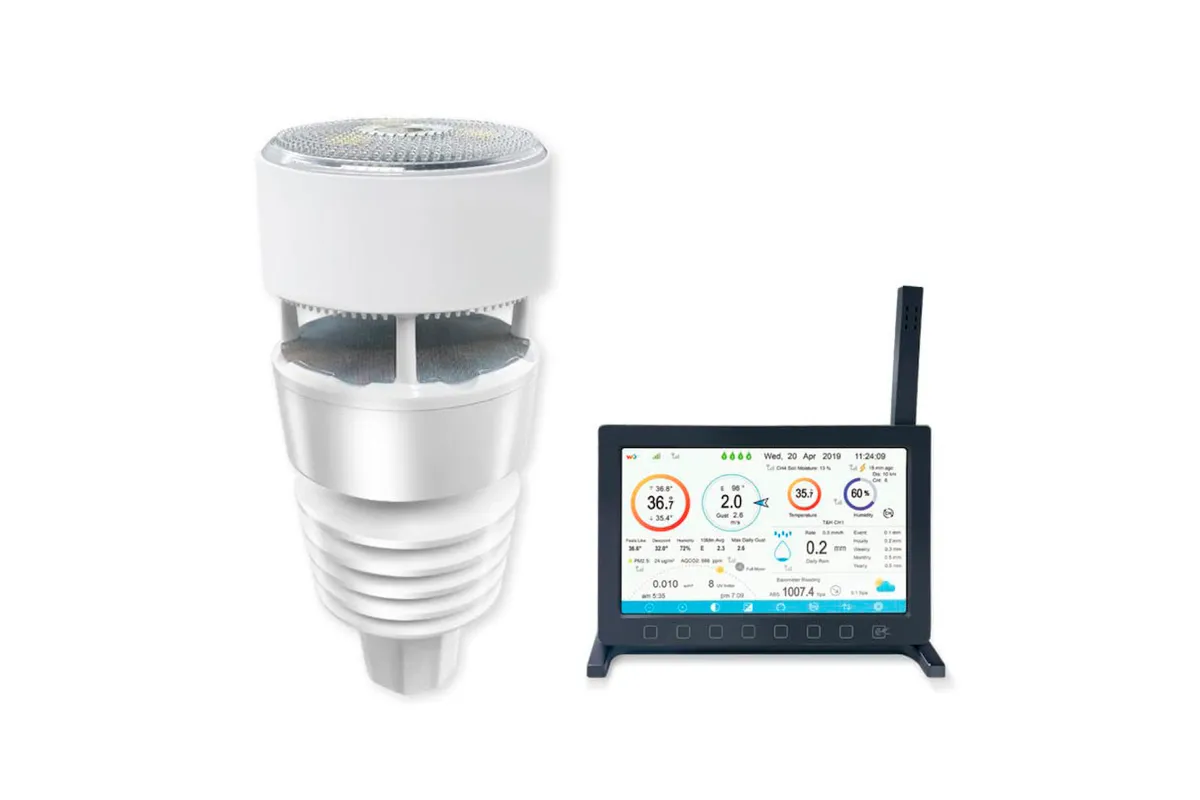
The Ecowitt HP2564 WittBoy Pro is a powerful and versatile home weather station, equipped with advanced sensors that can measure a wide range of weather parameters including UV level, light intensity, temperature, humidity, air pressure, wind speed and wind direction.
In addition to the traditional self-emptying rain gauge sensor, precipitation is measured by an anti-vibration haptic rainfall sensor, so it has very low maintenance requirements. The outdoor sensor is dual-powered, with both a built-in solar panel and a backup battery, so you needn’t worry about interruptions in data.
It has a large, 7” TFT full-colour display, which in itself, has inbuilt sensors for temperature, pressure and humidity, allowing you to compare indoor and outdoor data. But it’s also Wi-Fi enabled, so you can remotely monitor and access your weather data using the Ecowitt app (or the Ecowitt weather website if you prefer not to use the app) in addition to using the dedicated display.
It’s also one of the most customisable home weather stations, as there are also a number of extra sensors, including for lightening, soil moisture, air quality, water leaks, and leaf wetness (the latter is used to inform on pest control, calculate the water balance of plant ecosystems, or predict the onset of fog/dew).
Netatmo weather station
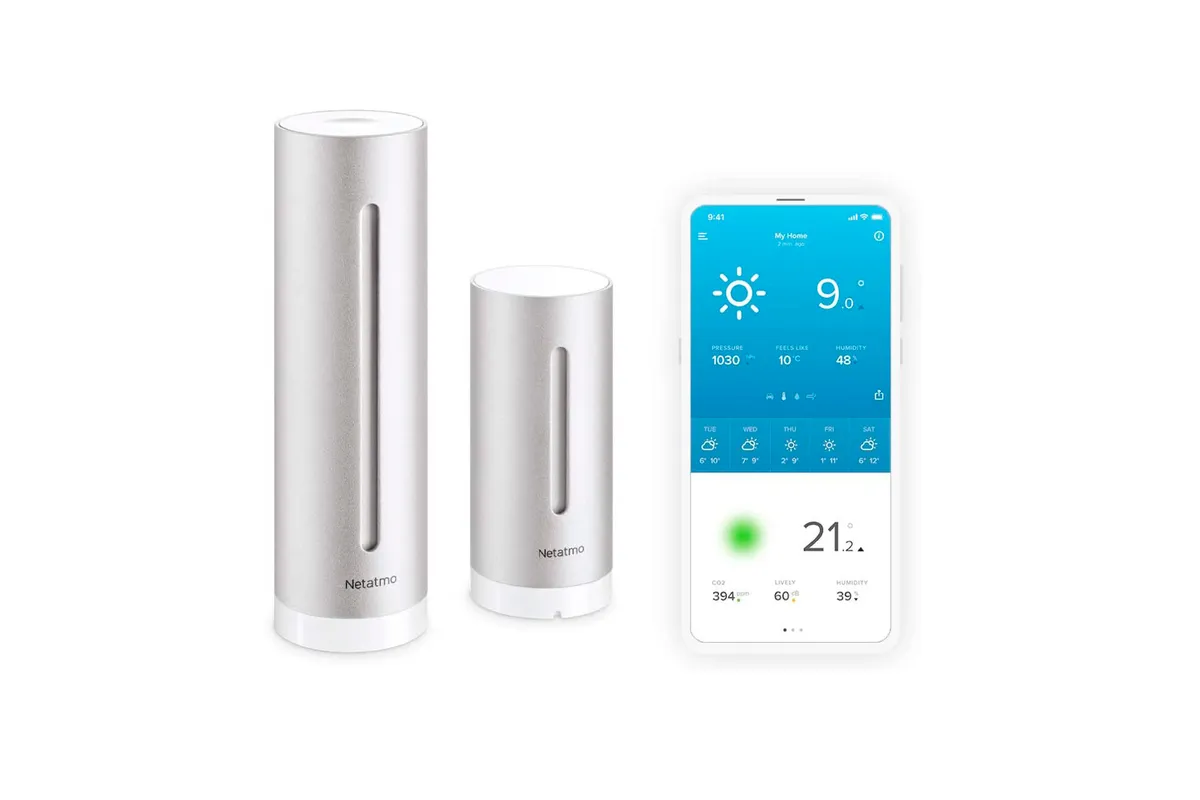
The Netatmo weather station has a sleek and modern design that can be connected to your home's Wi-Fi network and synced with your smartphone, for real-time weather updates and notifications wherever you are. It features a customisable package with various add-ons, including an additional rain gauge and anemometer for measuring wind speed and direction.
It's compatible with Amazon Alexa and the Apple HomeKit, and is suitable for both indoor and outdoor use. Granted, the indoor option won’t give you readings on precipitation, but it can measure carbon dioxide levels, pressure, and humidity, while still giving you a fairly accurate seven-day forecast. The information it provides can help you improve indoor air quality, and it even has ventilation alerts that will tell you when it’s time to air out your home.
The Netatmo weather station does not include a dedicated display, so you’ll need to access the data via the app, which is available for both iOS and Android, or the web app for PC and Mac.
Sainlogic WS3500
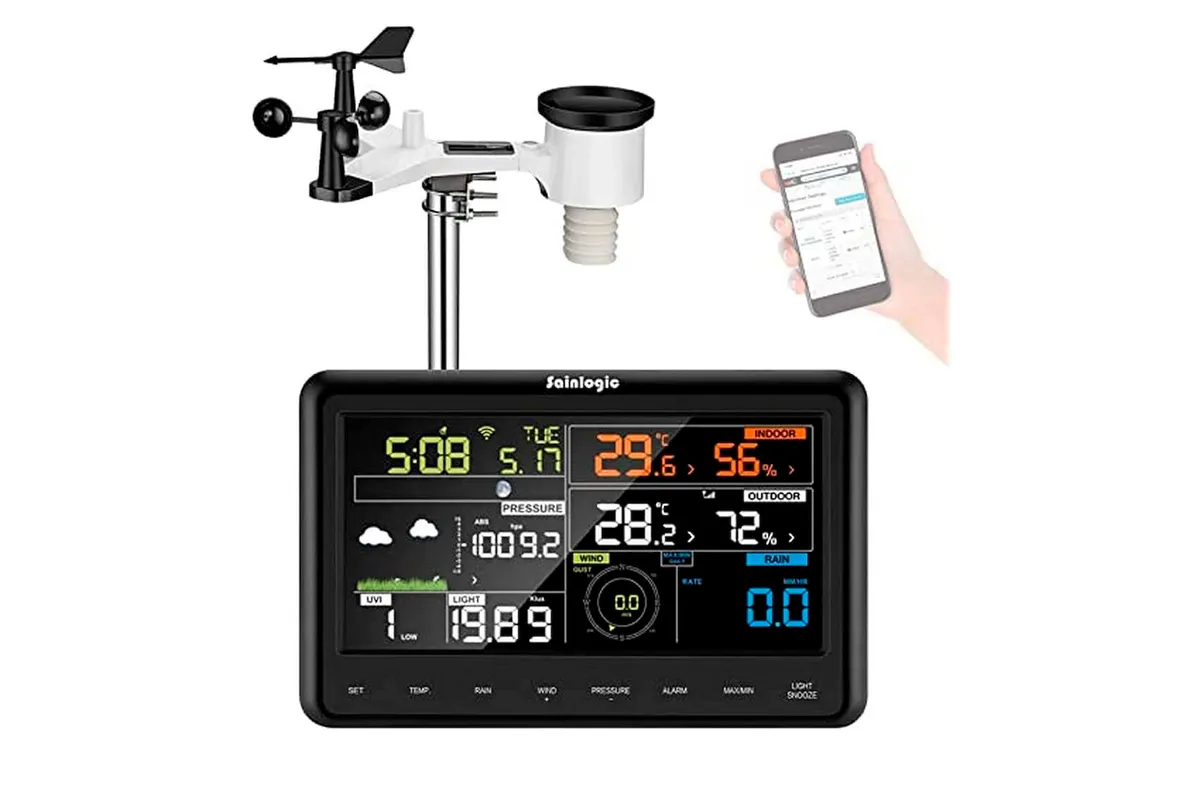
The Sainlogic WS3500 is one of the highest-rated home weather stations on Amazon, and is very similar to the Ambient Weather WS-2902C. It’s solar-powered (with two backup batteries), and you can access your data through either the large LCD or via the mobile WS View app.
It comes with a rain gauge, high-speed anemometer, thermometer, wind vane and an optical sensor to track wind direction. But just be aware, this is the EU model so if you want to keep the display running 24/7, it’s better to plug it into the mains, and you’ll need to buy an EU-UK adaptor.
Woodford traditional-style barometer
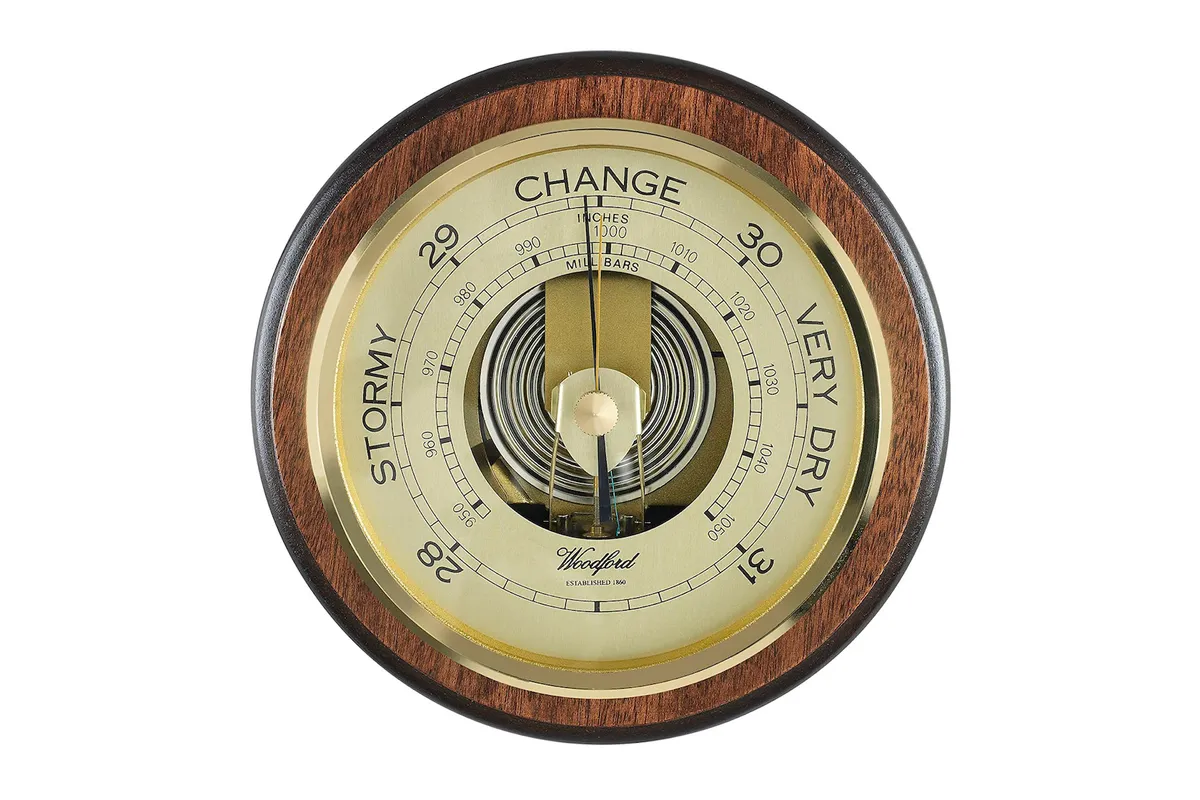
If you prefer to get back to basics with a more traditional-style home weather station, then you might want to consider getting a barometer. Back in the day, it was common to see mercury barometers, but their use declined in the mid-20th Century due to concerns about the toxicity of mercury and the risks associated with handling and disposal.
The use of mercury has since largely been replaced with safer alternatives, like aneroid cells (a sealed, flexible metal container), which works without the use of liquids or gases to measure changes in pressure.
Established in 1860, Woodford is a staple when it comes to clocks and barometers, and this aneroid barometer is made to last. The dial is constructed from metal and is the perfect choice to fit in with your cottage core aesthetic.
Bresser Weather Station
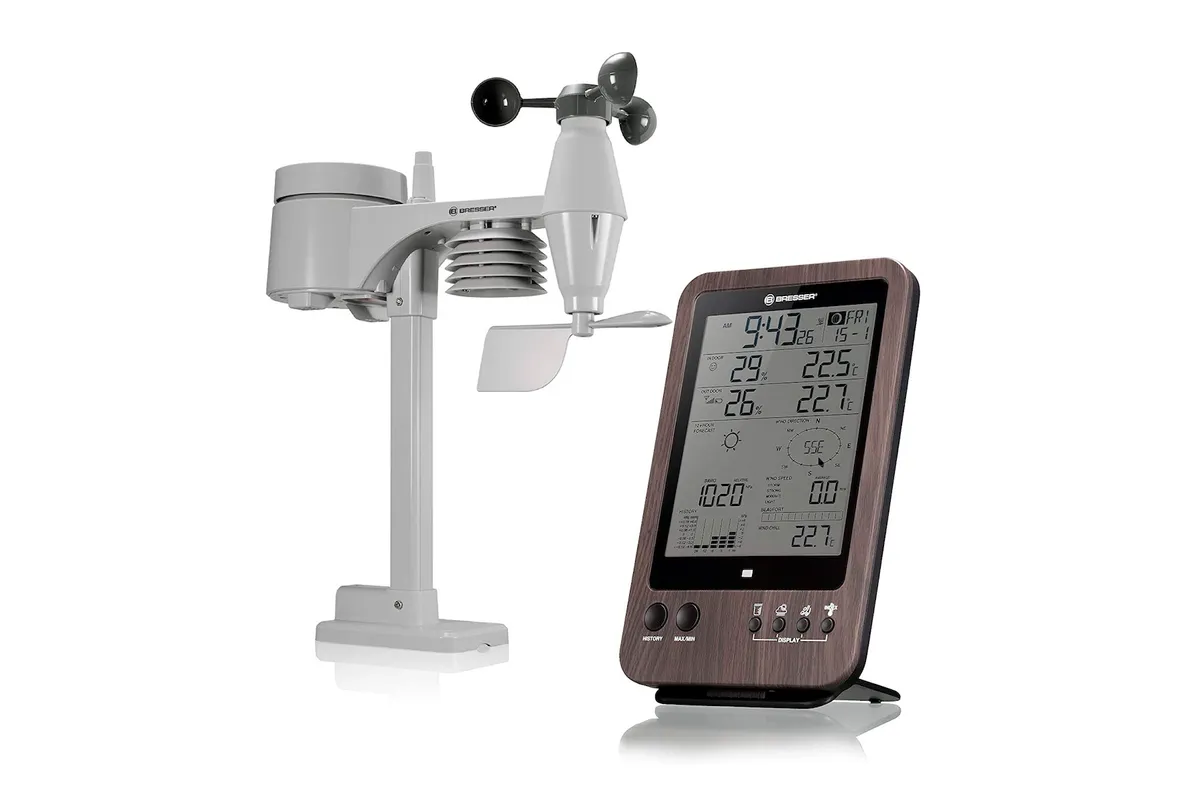
This battery-powered weather station is budget-friendly and comes with a clear, easy-to-read display. The display is in black-and-white (with a backlight you can toggle on and off), which is energy-saving for those 6 x AA batteries, and has a decent 150m range.
The package offers decent all-around functionality, including temperature, rainfall, a 12-hour forecast, wind direction, speed, Beaufort wind force and wind chill. It comes in either white, black or wood effect, and a handy spirit level on the top helps with positioning.
Youshiko YC9387 Premium weather station
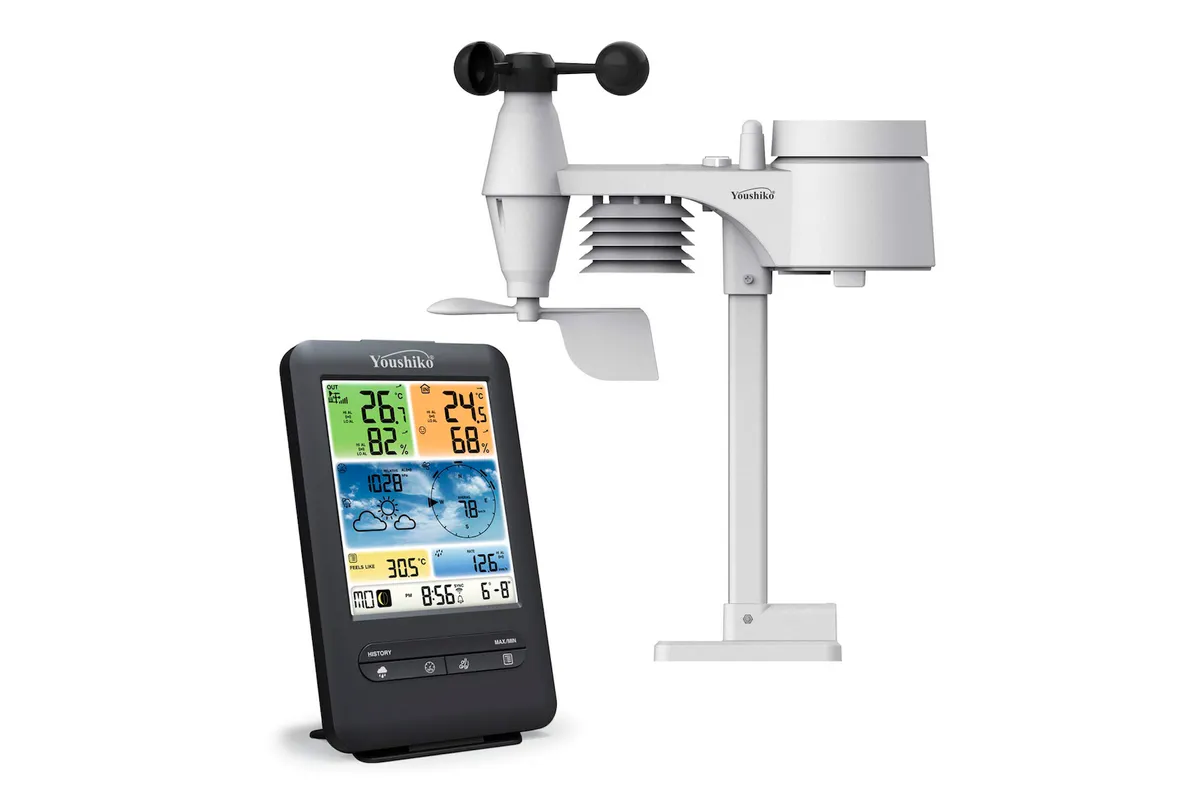
This is the 2023 model of the Youshiko Wi-Fi weather station, and comes with all the usual features, including indoor and outdoor temperature, humidity, gust or average wind speed and trend, wind chill, dew point readings, wind level and barometric pressure.
In addition to its weather monitoring capabilities, the YC9387 also includes other useful features, including an alarm clock to alert you to various changes, including drops in barometric pressure, changes in rainfall, temperature, humidity or wind speed – but all that is customisable, so you don’t need to worry about it going off if you’d rather it didn’t.
There’s also a handy calendar function, and the large LCD will also show you the various moon phases. But you’ll need to decide in advance whether you’d like a portrait or landscape display.
ACCUR8 A8-DWS5100

The A8-DWS5100 from ACCUR8 is excellent value for money and is a good mid-range home weather station. Like the others in this list, it transmits measured values for wind speed, wind direction, humidity, temperature, and rainfall and displays historical values.
It provides a reliable 12-hour forecast for your local area and will alert you to any weather extremes headed your way. It’s also user-programmable, so you can set your own minimum and maximum values. It comes with a display console (receiver), a sensor array with an integrated outdoor transmitter and various bits of mounting hardware.
The outdoor sensor suite is solar powered so there’s minimal maintenance, and although it comes with a dedicated LCD base station – you can also get the data via the app.
Read more: